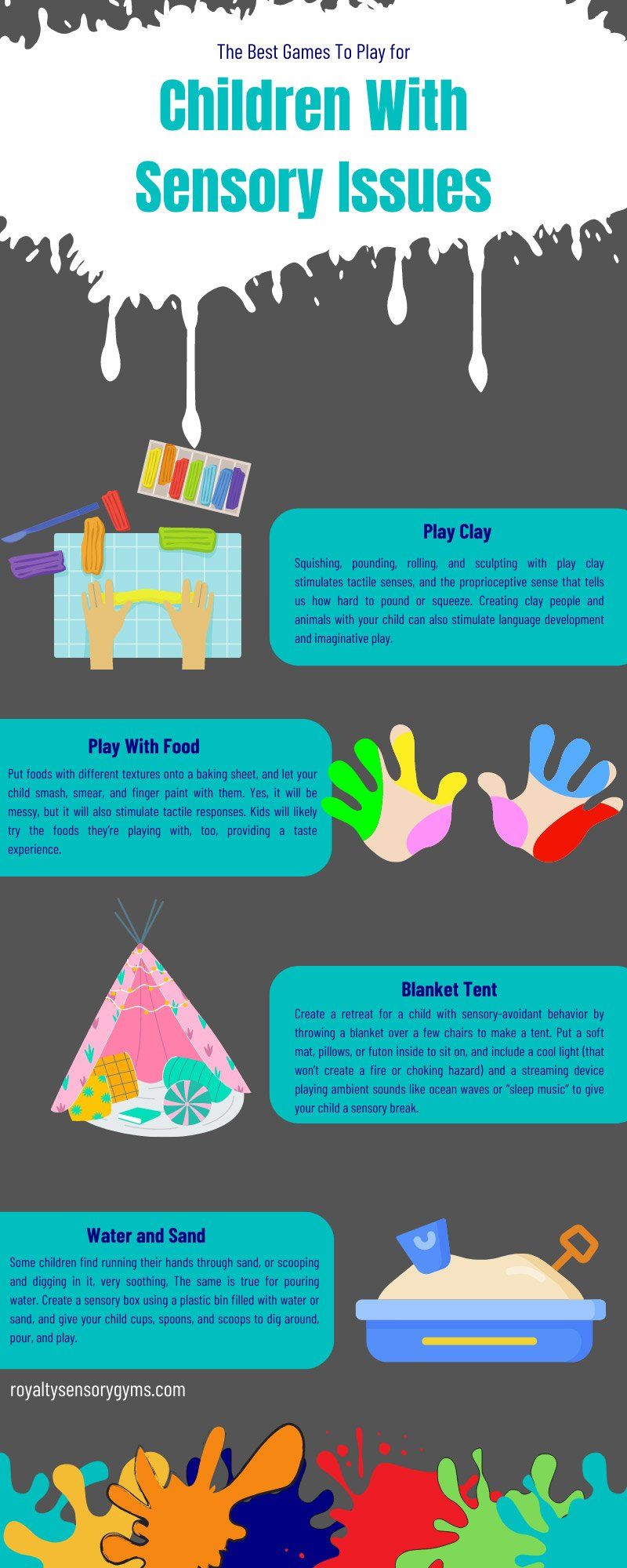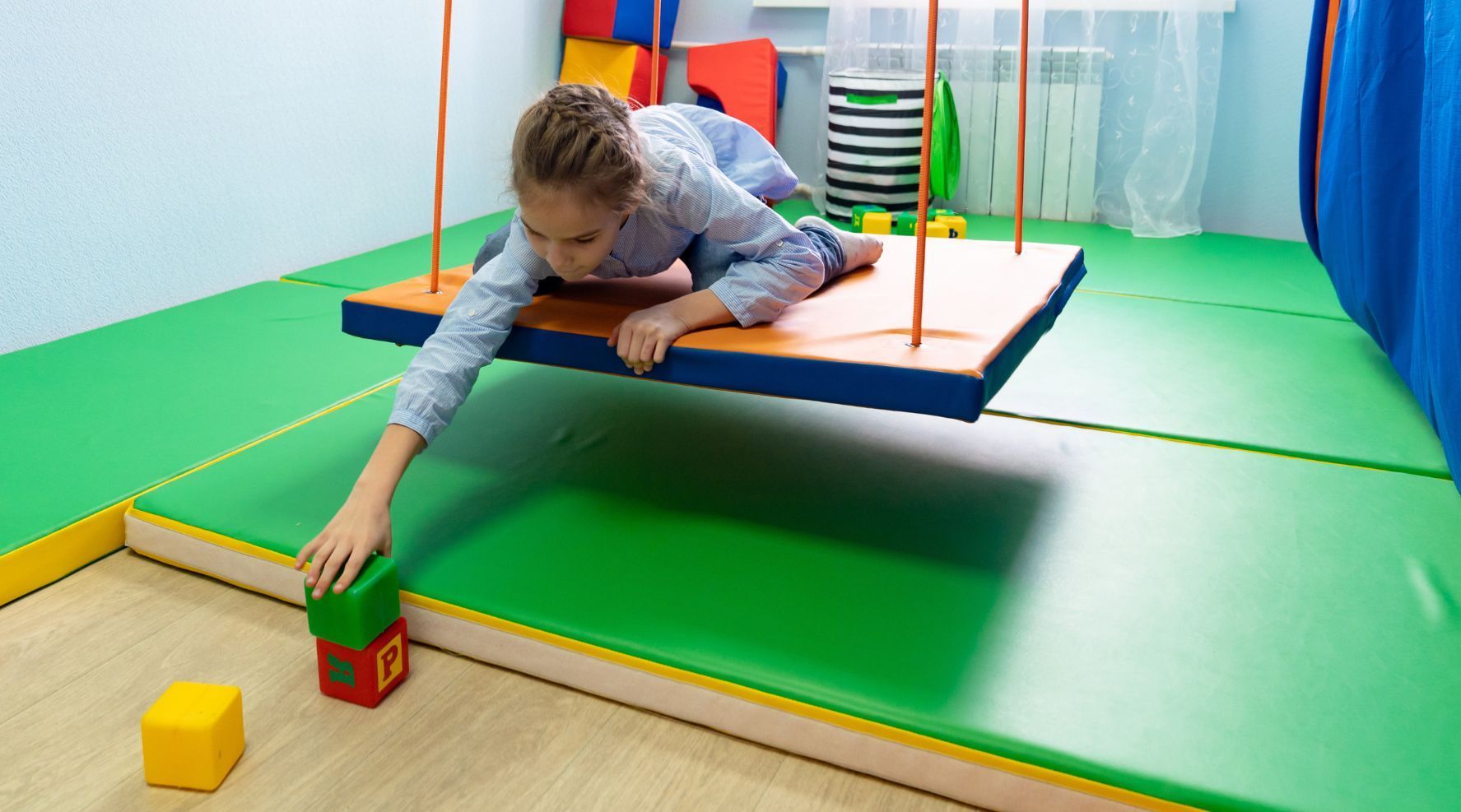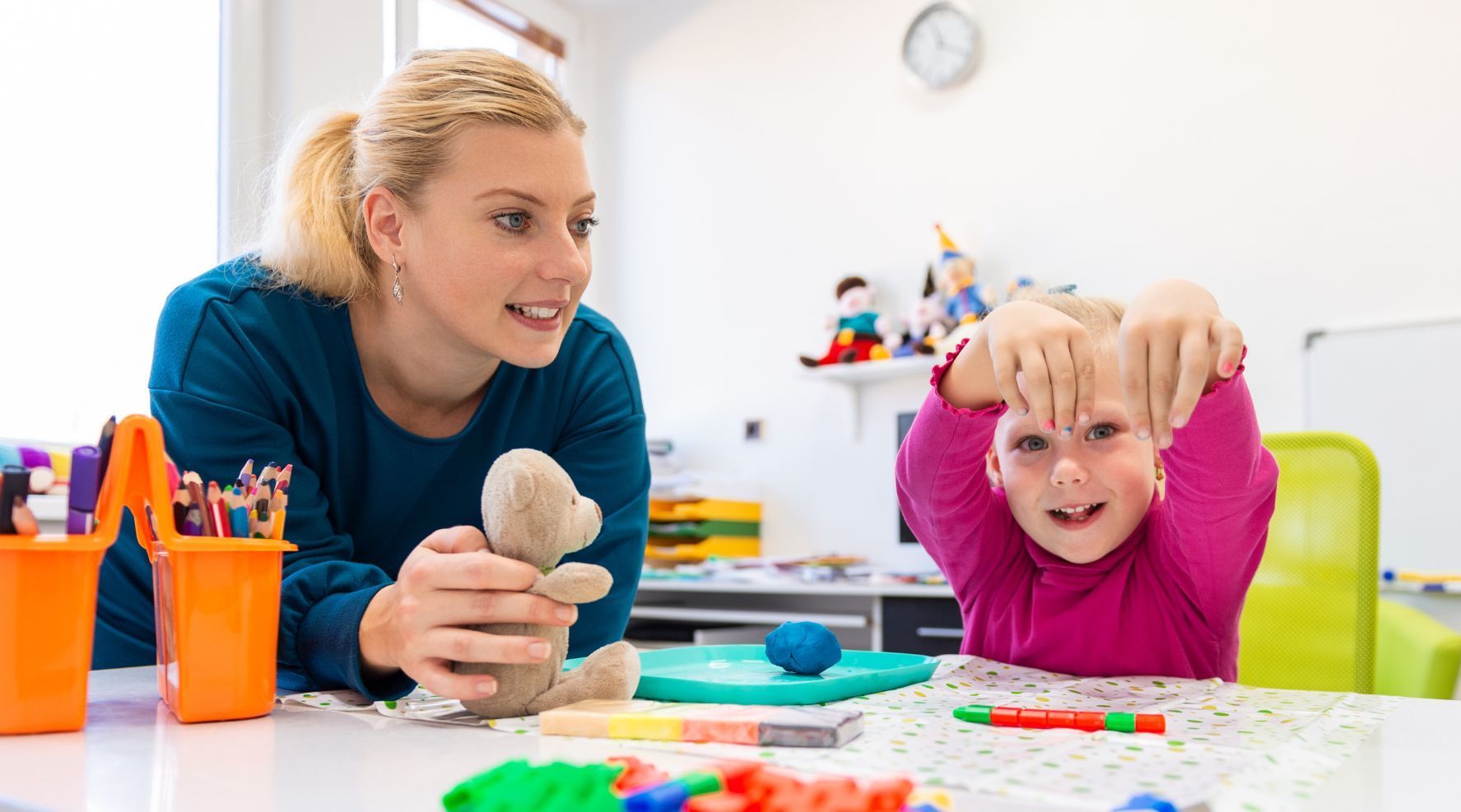The Best Games To Play for Children With Sensory Issues
Every child is unique, with their own temperament, interests, and preferences, but most children learn through play. Kids with neurodivergent brains process issues differently than most. This may result in strong reactions to sensory stimulation. Sensory play could help them with their responses.
This type of play involves games and activities that stimulate the senses, offering an opportunity to practice processing sensory information. Kids who demonstrate “sensory seeking” behavior, like jumping, crashing into things, or hugging too hard, may benefit from sensory play that gives them a safe way to get the sensory stimulation they need.
When parents notice unusual reactions to sensory stimuli, they often instinctively create activities that soothe or please their kids. They find ways for their little sensory seeker to “burn off excess energy.” They may push their child on a swing for what seems like hours.
Coupled with activities that address sensory issues in a fun and engaging way, kids with autism and those with sensory processing or sensory integration disorders can develop strategies to help themselves cope when incoming sensory information overwhelms or confuses them.
Some of the best games to play for children with sensory issues look a lot like simple, everyday fun, but these games and activities provide a “sensory diet” that soothes sensory-avoiding children or addresses the need for sensory stimulation that sensory-seeking kids display.
Seven, Not Five, Senses
Everyone learns that there are five senses—sight, smell, taste, touch, and smell. But there are actually seven senses. The other two are the vestibular and the proprioceptive senses.
The vestibular sense regulates the inner ear and tells the body where it is relative to the ground. In simple terms, the vestibular sense is our sense of balance.
The proprioceptive sense tells us about the state of our own bodies: it’s what processes the nerve responses to heat, cold, and movement. It tells us where our feet are relative to our arms and legs, and where our bodies are relative to the space around us. It lets us monitor our inner state, whether we feel well or sick, and helps us gauge how much space we should keep between ourselves and others.
Sensory games offer controlled sensory experiences that help develop these senses while also soothing an overstimulated child or providing the extra stimulation that a child with sensory-seeking behavior needs.
The best games to play for children with sensory issues engage all seven senses, though not necessarily all at once, and help kids get the sensory information they need from their environment while also having fun.
Parents can create their own home sensory gym for their children. It can be a dedicated room in the house, a corner of the family room, or a section of a finished basement. The main point is to simply provide games and activities that children can select when they need a certain type of sensory input, which they perceive as simply choosing what to play with next.
Never use small objects in sensory play that present choking hazards. Never take your eyes off a child around water: toddlers can drown in just a few inches of water, so if you use water play, be there to play with your child, and empty any bins or buckets immediately when playtime is over.
Play Clay
Squishing, pounding, rolling, and sculpting with play clay stimulates tactile senses, and the proprioceptive sense that tells us how hard to pound or squeeze. Creating clay people and animals with your child can also stimulate language development and imaginative play.
Play With Food
Put foods with different textures onto a baking sheet, and let your child smash, smear, and finger paint with them. Yes, it will be messy, but it will also stimulate tactile responses. Kids will likely try the foods they’re playing with, too, providing a taste experience. Just be sure to differentiate between playtime and dinnertime so that there’s no playing with food at the table.
You can also use food to stimulate the sense of smell. For a pre-school or kindergartener, put foods with strong odors in a paper cup, ask your child to close their eyes, and hold the cup where they can smell it. Use strong smelling foods like coffee, garlic, or onions, as well as pleasant smelling foods like bananas or strawberries, to help your child learn to identify smells.
If you don’t want to waste food for play, make non-toxic homemade play clay. Recipes abound online. Separate your completed batch of clay into four or five paper cups, and add flavorings like vanilla, mint, almond, lemon, and cinnamon. Help your child identify each smell—but don’t let them eat the clay!
Name That Sound
Crinkle some paper, bounce a ball, or play ringtones behind your back. Ask your child to identify the sound. You can also do this with musical instruments: listen to a recording designed to introduce your child to the different sounds of the orchestra. Teach them how to differentiate between the instruments that make each kind of sound, plus whether it is a “low” or “high” sound.
Blanket Tent
Create a retreat for a child with sensory-avoidant behavior by throwing a blanket over a few chairs to make a tent. Put a soft mat, pillows, or futon inside to sit on, and include a cool light (that won’t create a fire or choking hazard) and a streaming device playing ambient sounds like ocean waves or “sleep music” to give your child a sensory break.
Obstacle Course
Mark out a “balance beam” on the floor using a masking tape or ribbon, and challenge your child to walk across it without "falling off." This can be just the first challenge of your indoor obstacle course: include shoe boxes to jump over, collapsible tunnels to crawl through, and crash pads made of couch cushions to crawl over.
Water and Sand
Some children find running their hands through sand, or scooping and digging in it, very soothing, The same is true for pouring water. Create a sensory box using a plastic bin filled with water or sand, and give your child cups, spoons, and scoops to dig around, pour, and play.
You can also put water in several different containers and add food coloring. Allow your child to mix and pour in the tub or into a plastic basin to hear the sounds and see the colors blending.
Find the Texture
Create a tactile scavenger hunt in your home. Ask your child to find three soft things, three hard things, three sticky things, or three scratchy things. Vary the challenge each time you play to find objects with different textures.
Certified occupational therapists can help parents create fun games at home to bolster therapy and maintain gains in sensory processing. Whatever activities you choose, remember the point is to have fun with your child and help them feel happy and free from anxiety.

Contact Royalty Sensory Gyms Today
Now's the time to start!
Contact Us
Thank you for contacting Royal Sensory Gyms.
We will get back to you as soon as possible.
Please try again later.
Hours of Operations
- Mon - Fri
- -
- Sat - Sun
- -
All Rights Reserved | Royal Sensory Gyms




